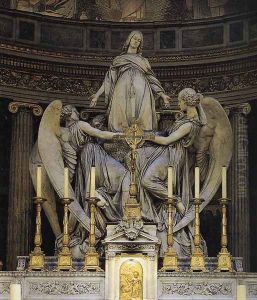Baron Carlo Marochetti Paintings
Baron Carlo Marochetti was an Italian-born sculptor who is best known for his works in the Romantic style and his significant contributions to public monuments in France and England during the 19th century. Born on July 4, 1805, in Turin, which was then part of the French Empire, Marochetti was exposed to the arts at a young age. His father was a minister under Napoleon, which afforded the young Marochetti the opportunity to study in Paris at the École des Beaux-Arts. He was a pupil of François Joseph Bosio, a prominent sculptor, and also studied painting under Antoine-Jean Gros.
Marochetti's career began to flourish in the 1830s. His early sculptures were marked by a Romantic sensibility and a dramatic use of form and detail, which were well received by the public and critics alike. His notable early works include sculptures for the pediment of the Louvre and the tomb of Vittorio Alfieri in Santa Croce, Florence, which showcased his skill and established his reputation.
In 1848, political turmoil and the outbreak of revolutions across Europe led Marochetti to move to London, where he would spend the majority of his career. His work appealed to Victorian taste, and he became a favorite sculptor of the British aristocracy. He was commissioned to create a number of public monuments, including the equestrian statue of Richard the Lionheart, which stands outside the Palace of Westminster, as well as statues of Queen Victoria and Prince Albert for the Great Exhibition of 1851.
Marochetti's contributions to British art were recognized when he was awarded the title of Baron by King Victor Emmanuel II of Italy and when he was elected as an associate member of the Royal Academy of Arts in London in 1866, although he never became a full member. His style, characterized by a blend of neoclassical tradition and romantic expression, was influential in the development of 19th-century sculpture.
Baron Carlo Marochetti died on December 29, 1867, in Passy, France. Although his works were sometimes criticized for a perceived lack of refinement, his bold and dynamic approach to sculpture left a lasting impression on the art world. Marochetti's legacy continues to be appreciated, particularly in the context of the public monuments that still stand as testament to his talent and the era in which he lived.
